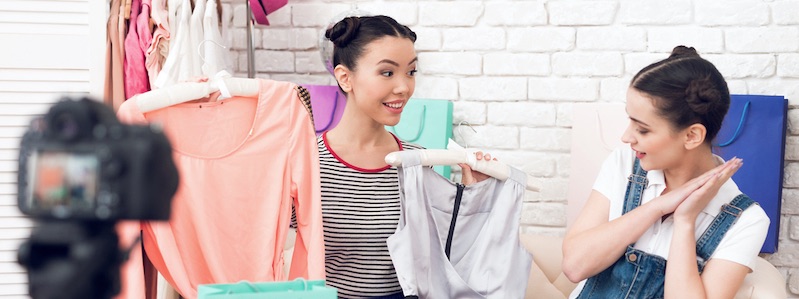
Apparel returns can be huge for online merchants. Quality product photos with accurate depictions are among the ways to reduce returns.
Four triggers cause apparel returns. Three are related to the products: appearance, quality, and fit. One trigger is related to the overall customer experience.
The appearance is the first thing customers see after opening the package. Is the product precisely as presented in photos and videos? Does it have the same colors, stitching, and material?
The quality should be as described or better. If not, customers will return it and likely switch to other merchants.
Product fit is self-explanatory — the product should fit well. Regardless of whether it matches photos and videos, if a product does not fit, a painful exchange process will begin.
Customer experience is the fourth trigger. Was the customer pleased with the buying and shipping process? How did she feel when she opened the package? Was the packaging thoughtful, or was it careless, thrown in a box? Did it include an unexpected gift? The initial presentation is key to her satisfaction. Even a color discrepancy won’t matter if the product fits. But if the experience and presentation were poor, she’ll likely send it back — with a bad review.
Thus merchants should avoid return triggers. In my years of running apparel boutiques, I used the following checklist. It kept returns to less than .5 percent (one-half of 1 percent) of overall sales.
Checklist for Reducing Apparel Returns
Increase the chances for your products to fit. Design (or buy) apparel with more stretchable fabric. The formula is simple: the more your product stretches, the more sizes it will fit and the lower the chances of a return, which is painful for both sides.
Ensure product quality. Customers want to receive what they paid for. Product quality is paramount to their satisfaction. Be truthful in product descriptions. Delineate levels of quality, such as “good,” “great,” or “premium.” Then keep your promises. And never sell inferior, low-quality items.
Use superior photos and videos. Online retailing changed the shopping experience, from tactile (touch and feel) to mainly visual. Online selling tools include images, videos, and information, such as product descriptions and benefits. But photos and videos are the most important. Treat them accordingly. If you invest in an excellent apparel collection, but the imagery is weak, it’s all a wasted effort.
Provide comprehensive descriptions, benefits. Many online stores still use manufacturers’ descriptions. Others try to get away with their own short versions. Neither will sustain sales over the long term.
Detailed, customized, and expansive product descriptions earn customers’ trust and entice them to buy again. Explain why your products are better than competitors. Why should consumers buy from you?
Use precise, detailed sizing. Average sizing charts are not enough. Provide measurements for all components of every product. Yes, it’s a lot of work. But it will reduce returns and lower customer-service inquiries.
Show not only the bust, waist, and hip sizes. Also provide sizes of every detail — such as armpit to armpit, inside pockets, and zipper lengths.
Check on each item before shipping. Even premium products can have imperfections. Manually inspect each piece before shipping it. Check seams, threads (cut threads that stick out), and zippers.
Offer excellent pre-sale service. Making it easy for shoppers to ask questions before placing the order will decrease returns. Ensure your business is easily reachable. Respond within minutes, in not instantly via live chat or the telephone. Shoppers want to engage with people, not companies. The more customer-service channels you have, the better. Your representatives should be personable and friendly. They can convert visitors to customers.
Make each order look like a present. Most fashion shoppers are female. Women care about the details, including the presentation. They shop differently than men. A well-wrapped, beautiful gift can impress female customers. Men don’t care, typically.
I once ran a test and sent half of the packages in regular plastic bags, and half gift-wrapped with glitter hearts, stars, and hand-written thank you cards. The gift-wrapped versions generated much lower returns.
Include a free bonus with all purchases. During my career, I experienced much resistance from executives to spend extra money on gifts. They considered it an unnecessary expense. My experience proved otherwise.
Quality gifts decrease return rates dramatically. I’ve experimented with handmade scented soap, bangle bracelets, hair clips, nail stickers, and heart necklaces. We wrapped the gifts separately and made the entire order look like a gift with a gift. It worked.
You can build an extra dollar (for the cost of gifts and wrapping) into the product price. Your benefit from that dollar will be significant.
Ecommerce
via https://www.AiUpNow.com
Viktoria Kanevsky, Khareem Sudlow
